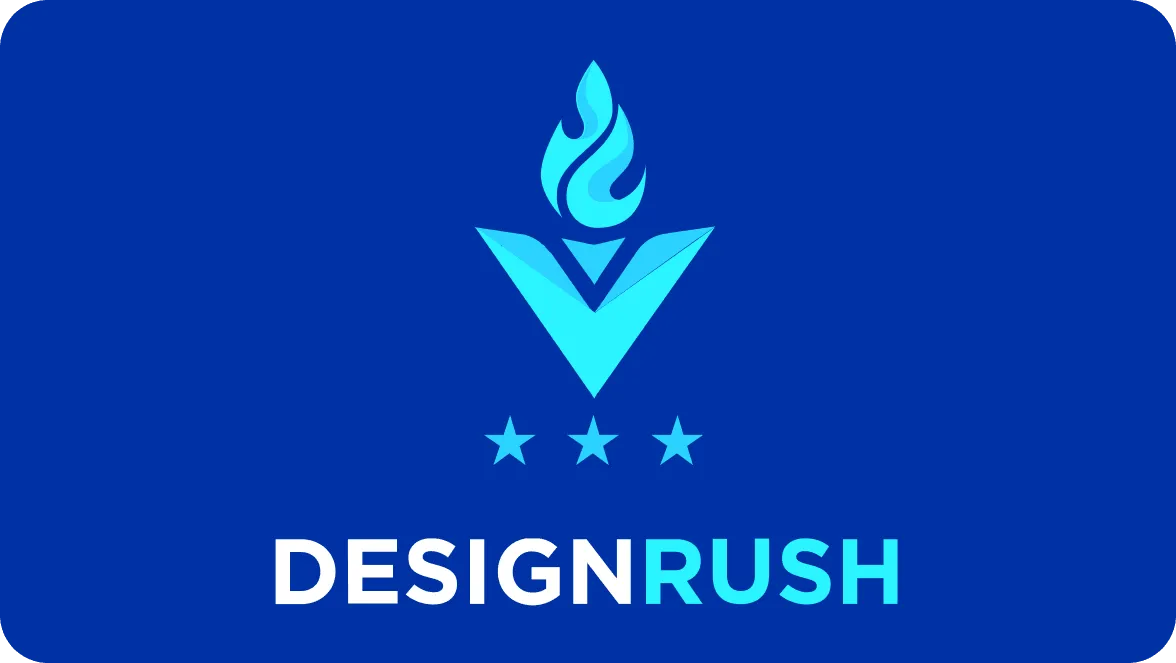
Online presence is detrimental to modern business success. And an appealing, user-friendly, and engaging website is essential for establishing it. But how should you approach building one?
You can create a website in multiple ways, and they all differ in website design cost and outcomes possible. For example you can hire a web design agency, turn to a freelancer, or use a ready-made template or website builder. Each approach has its pros and cons we’ll discuss in detail below.
As a UI/UX design agency, we at DigitalSuits have created unparalleled design experiences for businesses of all sizes. So we know first-hand that the question of web design costs is critical for any business owner, especially when it comes to startups and small businesses.
Unfortunately, it’s impossible to provide a clear-cut answer on how much your website will cost you. However, we’ll do our best to guide you through all the specifics of budgeting such a project. We’ll break down what factors are at play and how price ranges differ based on your design partner’s location.
3 ways to approach web design
Let’s kick off with a review of the three most common ways to get a website design:
Using off-the-shelf solutions
Hiring a freelancer
Turning to a web design agency
Option 1: Using a website builder and an out-of-the-box theme
Some examples of popular website builder tools are Squarespace, WordPress, and Wix. With their help, you can create your website from a blank page or get a free or paid theme. Let’s have a look at the most significant pros and cons of this solution.
Pros:
Affordable way to build a website. Tools like Squarespace and Wix come at a monthly subscription ($16-49 per month for Squarespace, $27-59 for Wix’s Business and eCommerce Plans). WordPress themes range from free to $50-100 monthly.
Website DIY opportunity. Website builders are intuitive and don’t require coding skills. So you can create a website even with no tech background (its quality is a whole other story, though).
Cons:
You’ll be limited to the website builder’s features. If you need advanced features like AR/VR product presentation, you can’t implement them altogether with a website builder. The same goes for intricate animation and transitions.
You risk outgrowing the vendor. As your business grows, your website’s performance may fail to handle the growing number of visitors. It will also become more challenging to upgrade your website. And once you realize you need to quit your vendor, replatforming can cost you dearly.
It’s harder to stand out with ready-made themes. If you opt for an off-the-shelf solution, your website will likely become one of the many since you’re not the only one using it. Design limitations also prevent you from standing out online.
You may unknowingly make common UI/UX design mistakes. The DIY approach requires solid UI/UX design skills. If you don’t have them in-house, your website may contain rookie web design mistakes. Such flaws will eventually harm your conversion rates and sales.
Option 2: Hiring a freelancer
Another option is to go to a freelancer marketplace like Upwork or Fiverr and hire your website designer there. While you oversee the project, they gather your requirements and build a website depending on your needs. Let’s discuss the benefits and drawbacks of this choice.
Pros:
Affordability. Since you’re hiring just one person, their services will cost you less. You can either pay them hourly or per deliverable.
Flexibility of collaboration. You hire a freelancer on a project basis. So you can part ways once you get your website. Freelancers are also flexible regarding their rates, turnaround time, and availability.
Cons:
A gamble element. There are reliable freelancers out there, but there are many bad apples, too. So, you risk missed deadlines, communication problems, and subpar outcomes.
Limited human resource. If you hire a single person to do the job, it’s highly unlikely they’ll have all the skills for creating a quality website. Those skills span UX research, prototyping, development, and testing.
Challenge with putting together a team. You risk running into this challenge while working around the previous con. You’ll need to invest much time into project management and team building instead of focusing on core business activities.
Project management handled by you. It’ll be up to you to make sure your freelancer does their job on time. So prepare to spend hours on communication and task management.
Option 3: Hiring a custom website design agency
Finally, you may turn to an agency and ask them to build your website. Its team gathers your requirements, research on your target audience, and creates your website, from wireframes to deployment and user testing.
Pros:
Expected results. You’re not limited to the freelancer’s scope of skills or website builder features. You are free to implement any functionality and design that corresponds to your business’s long-term strategy. You can also choose the best technology for your particular needs.
Quality design. Web design agencies employ masters of their trade in every aspect of the process, from UX research to development. This way, they ensure you get high-quality deliverables.
Versatile expertise. Agencies have rich experience building websites for multiple industries. Therefore, they’re better equipped to help your business stand out from the competition and comply with regulations.
Cons:
High upfront costs. Hiring an agency entails the highest upfront web design costs. That said, the TCO may turn out to be lower in the long run. How come? Well, you are less likely to migrate or rebuild your website as your business grows.
Lengthy custom website design. A ready-made theme takes a week or two to tweak and populate with content. In contrast, custom web design takes longer due to the scope of work involved. However, all that work ensures you get a quality website.
Bottom line. Which option is the best for you?
Out-of-the-box solutions (ready-made themes and website builders) are excellent for personal or semi-professional use. They can be enough to create a portfolio website or run a travel blog. However, they’re not suitable for business needs in the long run. This option won’t make you stand out and will reduce the flexibility of your design and functionality.
Hiring a freelancer may seem like a better alternative. But there’s too much risk involved. Freelancers can’t rival agencies in their skill set. Moreover, you risk stumbling upon a problematic contractor. You’ll also need to cope with all the project management yourself.
Thus, we highly recommend turning to a web design agency if you need a scalable and high-quality commercial website for your business. This approach ensures complete flexibility since you can choose the best technology stack and get the results you expect. You’ll also have total control over your website when it comes to maintaining, upgrading, and scaling it.
4 factors that impact web design costs
Launching a website itself comes with particular one-time and recurring costs. For example, you’ll need to pay for a domain name, get an SSL certificate, and find a reliable web hosting provider.
But while those are easy to estimate, custom website design costs are anything but. So why don’t agencies just publish their web designing prices, like “single-page website – $1,000”?
Well, that’s because every web design project is unique, and so are the costs. Here are the four factors defining your project’s price tag.
1. Website complexity
This factor encompasses two aspects of your website: structural complexity (the number of pages, the navigation’s complexity, and more) and functionality (the features’ number and complexity).
For example, designing a single-page website for a company isn’t as resource-consuming as creating a custom online store as we did for Vit Health. The reason? The underlying website structure and functionality differ wildly.
2. Visual design complexity
The look of your website is also a player in its cost. Will you need custom photos for your product or service pages? If so, include a photographer’s services. Will your website require unique illustrations? Most likely. And you’ll remunerate a graphic designer for their work.
But these are just the essentials. You may also want to follow the latest web design trends, like animated transitions and micro-animations. They are more challenging to implement and require a motion designer on board.
3. Auxiliary services
Website design isn’t just about, well, the design itself. For example, you’ll need to research your target audience. Without it, you’ll end up guessing your users’ preferences – and those predictions rarely pan out.
Here’s a brief overview of the auxiliary services your web design project may require:
- Customer journey mapping. Lead generation and user scenarios rely heavily on the customer journey. So you’ll need it in place when building a website.
- User research. It reveals your target users’ needs and preferences through surveys, interviews, and market research.
- Wireframing and prototyping. These steps involve creating visual outlines and interactive models to define and prioritize the features that work best for both your business goals and your users' needs.
- Usability testing. Once the design process is over, you need to test it in a real-world setting, collect user feedback, and improve your UX.
- Competitor analysis. To stand out from the crowd, you should know what the crowd is doing. That’s where competitor analysis comes in handy.
- Content writing. Someone needs to craft quality text for your website’s pages, from the homepage to product descriptions.
4. Team size
All the factors above also define the critical determinant of website design costs: your team’s composition. For example, if your website requires complex animations, you’ll need a motion designer. And if you can’t do user research in-house, you should seek professional analysts’ services.
Your team’s size will also depend on your website’s complexity in terms of features, structure, and visuals. And the more professionals you need, the higher the final price tag for website design services.
The bare minimum for a web design team typically include a project manager, a web developer, a UI/UX designer, and a QA specialist.
This team is usually enough for small business website design projects. If you don’t have an SEO specialist in your in-house marketing team, your web design team should include one. Your business will also need a content writer and a marketing strategist.
Average website design cost in 4 regions
How does a web design cost differ worldwide? Let’s go on a trip to four regions and break down the average web design rates in North America, Western and Eastern Europe, and Southeast Asia.
Note: we calculated all percentages based on Clutch.co data and excluded agencies without their hourly rates published.
| Regions and countries | Average hourly rate bracket |
|---|---|
| North America | $100-149 |
| The United States | $100-149 |
| Canada | $100-149 |
| Western Europe | $150-199 |
| The United Kingdom | $150-199 |
| Germany | $150-149 |
| Italy | $100-149 |
| Eastern Europe | $25-49 |
| Ukraine | $25-49 |
| Poland | $25-49 |
| Romania | $25-49 |
| South and Southeast Asia | N/A |
| India | Up to $25 |
| The Philippines | $100-149 |
North America
This region has diverse hourly rates, depending on the country. Overall, most agencies’ website design pricing falls into the $100-149 per hour category (52.68%).
It’s also the case for US-based web design agencies. Most (54.19%) charge $100-149 per hour. This country is the absolute web design powerhouse in the region. It’s home to the majority of North American web design agencies registered on Clutch.co (90.76%). It’s also the number one country in the platform’s ranking of popular destinations (based on traffic).
The same pricing trend rings true in Canada. 41.27% of Canadian web design agencies charge between $100 and $149 per hour. Mexico, however, is an outlier. The most common hourly rate falls into the $25-49 category.
Western Europe
Now, let’s move to Western Europe. According to the Clutch.co data, it’s an even more expensive region for hiring web design services. In fact, 42.84% of regional agencies have a $150-199 hourly rate, while 21.44% set their web design services pricing at $100-149 per hour.
The United Kingdom is among the leaders in the region, with 62.49% of Western European agencies (over 6,000) having an office in this country. It’s also the main driver behind the high average hourly rates for the entire region. 59.11% of agencies with published rates offer their services at $150-199 per hour.
As for other countries, the runners-up are Germany (850 firms), Spain (689), and Italy (517). German and Italian firms typically have an hourly rate of $100-149. Spain is an outlier, with most agencies setting the price at $25-49 per hour. Competitive prices earned this country a spot on Clutch.co’s popular locations list.
Eastern Europe
Eastern European countries are located in the same (or almost the same) time zone as their Western European counterparts. Nevertheless, they come with web design hourly rates that are easier on the pocket. Eastern European agencies are also well-known for their excellent quality of work and communication skills.
According to Clutch.co, most agencies (48.86%) in this region set the website design pricing at $25-49 per hour. At the same time, 31.31% fall into the $50-99 per hour category.
Ukraine is the home to around a fourth of web design agencies in the region. Most Ukrainian agencies (63.53%) charge between $25 and $49 per hour. Moreover, Ukraine and Poland, made it to Clutch.co’s popular web design locations list.
Speaking of Poland, the country is runner-up in popularity and also has competitive rates: 50.12% of agencies charge $25-49 per hour. The next most common price range bracket is $50-99 (40.33%).
South and Southeast Asia
Clutch.co doesn’t provide data on the region, but India and the Philippines made it to its list of popular locations for web design services (India even secured the number two spot). Thus, omitting these two countries in our overview would be unfair.
India is the cheapest location on our list. The average cost for web design services falls under $25 per hour: 51.08% of agencies charge that much. The second most common price range is $25-49 (36.55%). However, India has earned a somewhat murky reputation as an outsourcing destination due to subpar output quality and communication skills.
As for the Philippines, this island country is popular thanks partly to English as one of its two official languages. However, it can’t boast a huge selection of web design firms. The prices range widely, from $100-149 (30.4%) to under $25 (25.7%) and $25-49 (24.3%) per hour.
Takeaway
So, how much does website design cost? Unfortunately, there’s no one-size-fits-all answer to this question. There are too many factors at play. The complexity of your website’s design and functionality, the auxiliary services required, and the location of your web design partner are just a few to mention.
We advise you to carefully consider your long-term goals to zero in on your best approach to web design – and how much you’re willing to invest in it upfront.
Would you like to get an estimate of your website’s cost? We at DigitalSuits would be happy to sit down with you, discuss your needs, and prepare a proposal. Drop us a line to kickstart the conversation.




































Was this helpful?
0
No comments yet